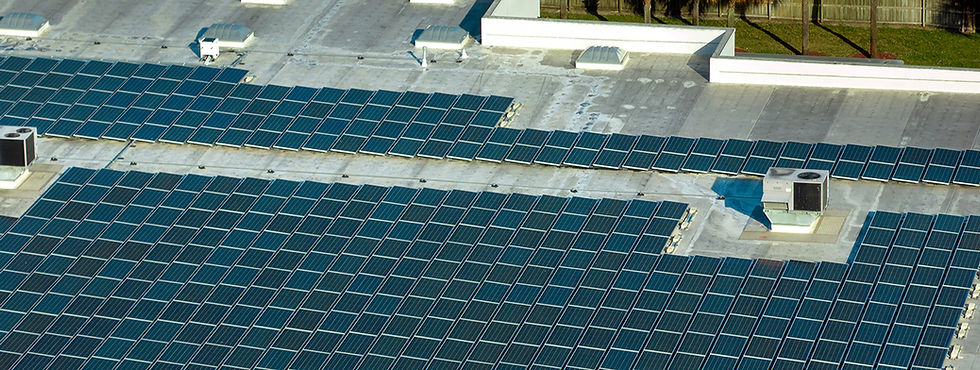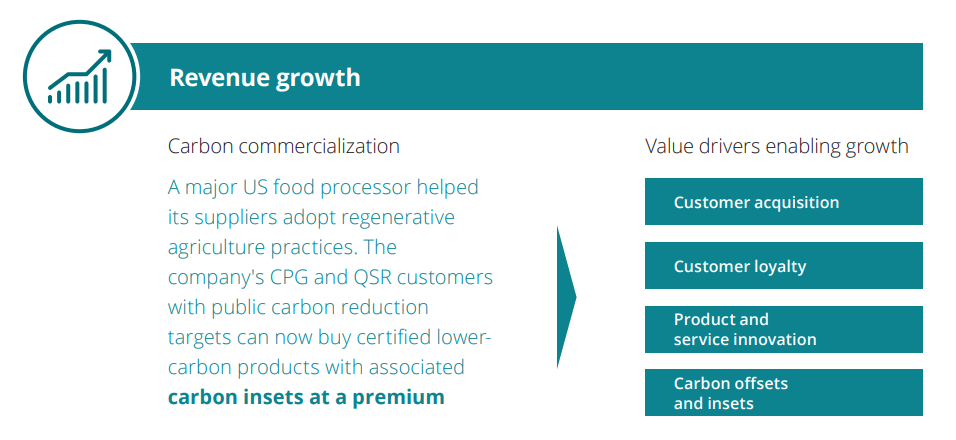Sustainability Leaders Describe How Decarbonizing Drives Revenues, Savings
- Serena Valentino
- Dec 11, 2024
- 6 min read
by Aaron Dalton, freelance writer, Executive Perspectives in the Wall Street Journal
Published on Dec 3, 2024, 3:00 PM

Executives at a Wall Street Journal forum discuss how sustainability initiatives backed by granular data can help companies identify and capture green business and savings opportunities
How can companies transition from seeing sustainability as a cost center to tapping its potential to drive revenue gains or achieve savings? That was the topic that Amelia DeLuca, the chief sustainability officer at Delta Air Lines, and Rob Roy, the chief investment officer and co-head of environmental sustainability at AdventHealth, explored with John Mennel, managing director at Deloitte Consulting LLP and the purpose strategy leader at Monitor Institute by Deloitte, at a Wall Street Journal forum during Deloitte’s Climate Week NYC 2024 conference. The conversation has been condensed and edited for clarity.

As one of the largest health systems in the United States, how does AdventHealth integrate sustainability with business strategy to potentially increase revenue or drive savings?
Rob Roy: Our experience has been that looking at our business through a sustainability lens gives us a fresh perspective. This approach allows us to find new ways of delivering our core health care products and services in a manner that adds value both financially and environmentally, while of course not detracting from our primary mission of serving our patients.
For example, our health care facilities use large amounts of anesthetic gases like nitrous oxide. These gases have a climate footprint hundreds of times larger than an equivalent volume of carbon dioxide. Across the industry, it turns out that over 90% of nitrous oxide supplies never make it to patients1 because the gas typically leaks out of the couplings and escapes from the pipes that transport it from basement storage tanks to operating rooms.
Now, while the financial costs associated with this leakage may not be significant enough on their own to attract much attention, when you start looking at the problem from a sustainability angle, you see how redesigning the storage and usage of these gases can help the organization reduce costs while also protecting the environment.
Looking at our business with a sustainability lens is an ongoing process, and we continue to find opportunities that are financially accretive, enhance our patient care, and are environmentally beneficial.

How can consumer brands like Delta Air Lines use sustainability to strengthen customer loyalty and engagement?
Amelia DeLuca: Our consumer data shows that a large portion of our high-value customers across all generations and cabins—from Gen Z to baby boomers in both our premium and main cabins—say that they expect us to act sustainably.
The challenge we face is that airlines are a hard-to-decarbonize sector. At Delta, we burn 4 billion gallons of jet fuel every year, which accounts for around 90% of our impact2 on the planet from a carbon emissions perspective. Sustainable aviation fuel (SAF) made from waste feedstocks has amazing potential to reduce the carbon emissions from a gallon of jet fuel by 80%3, but we only had access to 4 million gallons of SAF4 last year. That’s why we expect it will take us until 2050 to reach net zero as SAF matures and the industry scales.
In the meantime, our customers expect us to take action today to decarbonize and become more of a green business wherever we can. So, for example, later this year, we’ll be switching to paper cups without plastic liners. This removes a potential point of friction with our customers who have told us they are trying to eliminate single-use plastics and expect us to do the same.
Now, bigger sustainability impacts will come from changes we are making that may not be as visible or tangible to our flyers–buying new planes that are 20% more efficient5, different airport approach vectors that can save jet fuel, efforts to reduce the weight of catering supplies, and ultimately, SAF.
So I think optimizing the brand value of our sustainability efforts is about doing what we can today to make tangible improvements on sustainability issues that matter to our customers, while also educating them about the long-term work we’re doing to tackle the challenges we need to solve to reduce our environmental impact.

Delta and AdventHealth operate in different sectors and face very different challenges around sustainability. Are there steps that companies in any industry could take to make their operations more sustainable while also driving revenue or reducing costs?
John Mennel: The key is to make sustainability strategy part of the overall business strategy. Deloitte identified four primary levers that companies are utilizing to boost top-line growth through sustainability.
One main way is via brand enhancement. To Amelia’s point, the data shows that almost all consumers across the board care about sustainability at some level. In a competitive market, sustainability can be the tiebreaker that motivates people to choose one brand over another—or to work for one organization over another.
At Deloitte, we also see companies incorporating sustainability into their pricing models by recognizing that more sustainable products may have more value for consumers and thus might be able to command a higher price point.
Additionally, companies are developing new products or ways to deliver their products that are more sustainable and have better outcomes, opening companies to new customer segments.
Finally, in what we view as the wave of the future, we are seeing companies stand up new multi-billion-dollar green businesses in which they are selling both a product and its carbon reduction benefits to customers.

How can companies leverage data to help choose which sustainability initiatives to prioritize?
Roy: If you’re going on a journey toward greater sustainability, first you need to know where you are today. The way to start is by collecting an enormous amount of data, then digging through that data to find opportunities.
Going back to the anesthetic gases example that I gave earlier, we thought there was an opportunity to switch from one gas that had a particularly high greenhouse gas equivalency to alternatives with lower carbon footprints. It wasn’t until we deeply analyzed the data that we saw the bigger opportunity was around improving the physical infrastructure for transporting gases around our buildings. By avoiding centralized medical gas piping in favor of portable canisters, we could not only shrink emissions and lower gas purchase costs but also unlock additional savings in design and construction costs for as we renovate facilities or build new ones..
So, pulling lots of data doesn’t give you the answers, but it does help you ask better questions that lead to those answers. If you are persistently inquisitive about your business and seize the initiative to look at your operations through a sustainability lens, you can find incredible opportunities to create wins and build momentum.
DeLuca: I think of data like an onion with layers upon layers of information. Looking at those layers of data through a fuel-savings lens lets us identify lots of little opportunities to reduce emissions and lower costs at the same time.
That’s why we put in place sustainability KPIs to track the operational improvements, such as reducing the runtime of our planes’ auxiliary power units, which provide heat and air conditioning at the gate. Cumulatively, those improvements are helping us save tens of millions of gallons of jet fuel per year.
Should sustainability initiatives be driven from the top-down or bottom-up?
Roy: Corporate leaders can drive changes in construction and design techniques. We can drive renewable power purchase agreements. We can define a vision and publicize some early wins to bake sustainability into the organization, but it’s employees themselves who are the greatest source of ideas. They will find a million ways to make the organization more sustainable by coming up with ideas that C-suite leaders might never imagine.
For example, I had a manager at one of our hospitals call me up and say, “I heard you’re the sustainability guy. I want to tell you about my freight farm. We took a shipping container, turned it into a hydroponic farm [which doesn’t require greenhouse gas-emitting fertilizers], and we’re harvesting a thousand heads of organic lettuce and vegetables per week that we serve directly to patients and staff.” What’s more, the program had a nine-month payback period. I told her, “I need 50 of those.” As a finance guy, I would do a nine-month payback for anything!
It’s employee-led sustainability initiatives like these that can improve employee engagement, reduce turnover, deliver better health outcomes, improve the patient experience, and strengthen our brand in the communities where we operate. As leaders, we can amplify these stories, encourage these initiatives, and empower our employees to drive sustainability improvements that also bring business benefits. (Visit WSJ for the full article)



Comments